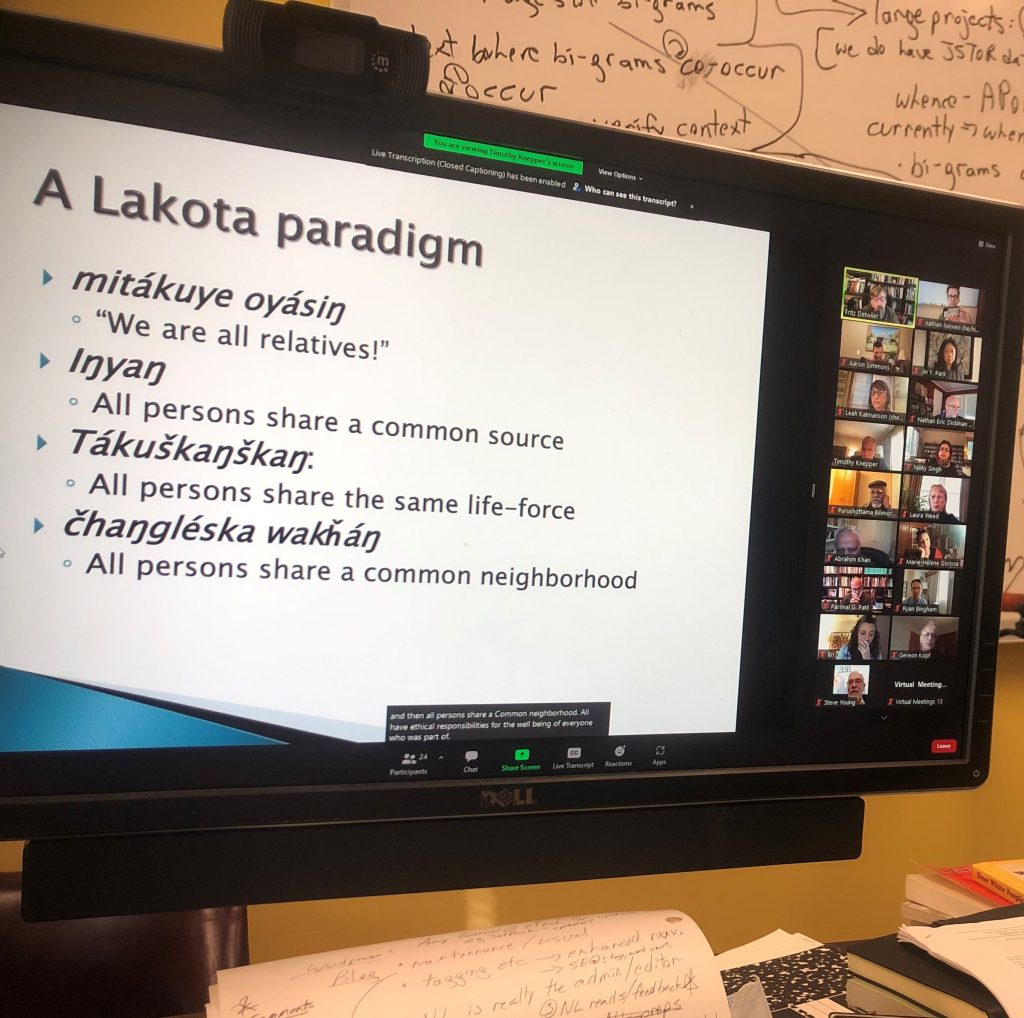
Can philosophy of religion enter the globalized, 21st-century world? If so, how might the field be taught? Prof. Loewen interviewed participants from a recently-concluded project funded by the Wabash Center, “Teaching Philosophy of Religion Inclusively to Diverse Students”: Jin Y. Park, Kevin Schilbrack, Eric Dickman, Louis Komjathy, and Gereon Kopf. You can listen to the episodes as a series on REL Podcasts or find them on the media page of the Global-Critical Philosophy of Religion website.
Gereon Kopf developed the grant-funded project, whose goal is to envision a pedagogical theory and concrete teaching strategies to facilitate student-centered global critical philosophy of religion. The two-year project of online workshops (see the GCPR timeline) involved 11 faculty teaching pilot courses in as many institutions, whose teaching approaches and outcomes were vetted by a group of 9 faculty from additional institutions.* The endeavor is driven by four central concerns:
- How to make students from diverse backgrounds feel represented and at home in an increasingly diverse classroom environment?
- How can we enable students in these diverse classroom settings to understand the beliefs and ways of thinking of their neighbors beyond the pervasive images and stereotypes characteristic of orientalism?
- How might we enable faculty to teach global and critical approaches to the philosophy of religion in courses that provide a “safe and brave” learning environment[1]?
- How do we implement diversity, equity, and inclusion in our teaching of philosophy of religion?
Prof. Kopf’s vision for the project is based on the “multi-entry approach” (see episode #6 in the series). Kopf’s basic idea is that, in order to fundamentally rethink philosophy of religion, it is necessary not only to engage texts and thinkers from a multiplicity of traditions but also to construct a method and terminology that facilitates multiple standpoints. The multi-entry approach enables a variety of systems and paradigms to engage with each other without using a language or a method that privileges one approach over the other. The multi-entry approach is based on five fundamental features.
- A multi-entry approach shifts the focus from traditions such as “Christianity” or “indigenous religions” to systems such as, e.g., “monotheism” and “communalism.” Traditions are not monolithic but diverse; systems, on the other hand, strive to be relatively consistent.
- Systems are driven by governing paradigms. E.g., in monotheism, the belief in one God, mostly conceived of as the personified ultimate, directly impacts beliefs about truth, human cognition and sometimes even psychology, as well as morality. Any system’s governing paradigm likewise determines particular questions and concerns—e.g., the theodicy problem—that it develops with regard to what we call “philosophy” and/of “religion.”
- Each system has a concrete historical context that has shaped its development, even as it can be stratified and applied independent from this particular context.
- Each system develops its own language to envision what we call “religion” and “philosophy.”
- Methodologically, albeit not necessarily in cohesiveness, the multi-entry approach regards all paradigms as equals.
Overall, the project strives to translate these five principles into concrete classroom strategies which we will implement and assess over the process of one year. Perspectives on the project will be forthcoming from selected journals, as well as in chapters appearing in the publications of the GCPR project.
Prof. Loewen always holds onto the possibility of adding future podcasts to the series.
* See the participants page on the GCPR website for more information about those involved in this, and other GCPR projects.
[1] See Brian Arao and Kristi Clemens’ “From Safe Spaces to Brave Spaces: A New Way to Frame Dialogue Around Diversity and Social Justice” (The Art of Effective Facilitation, ed. Lisa Landreman, Stylus Publishing, 2013, 135-150).